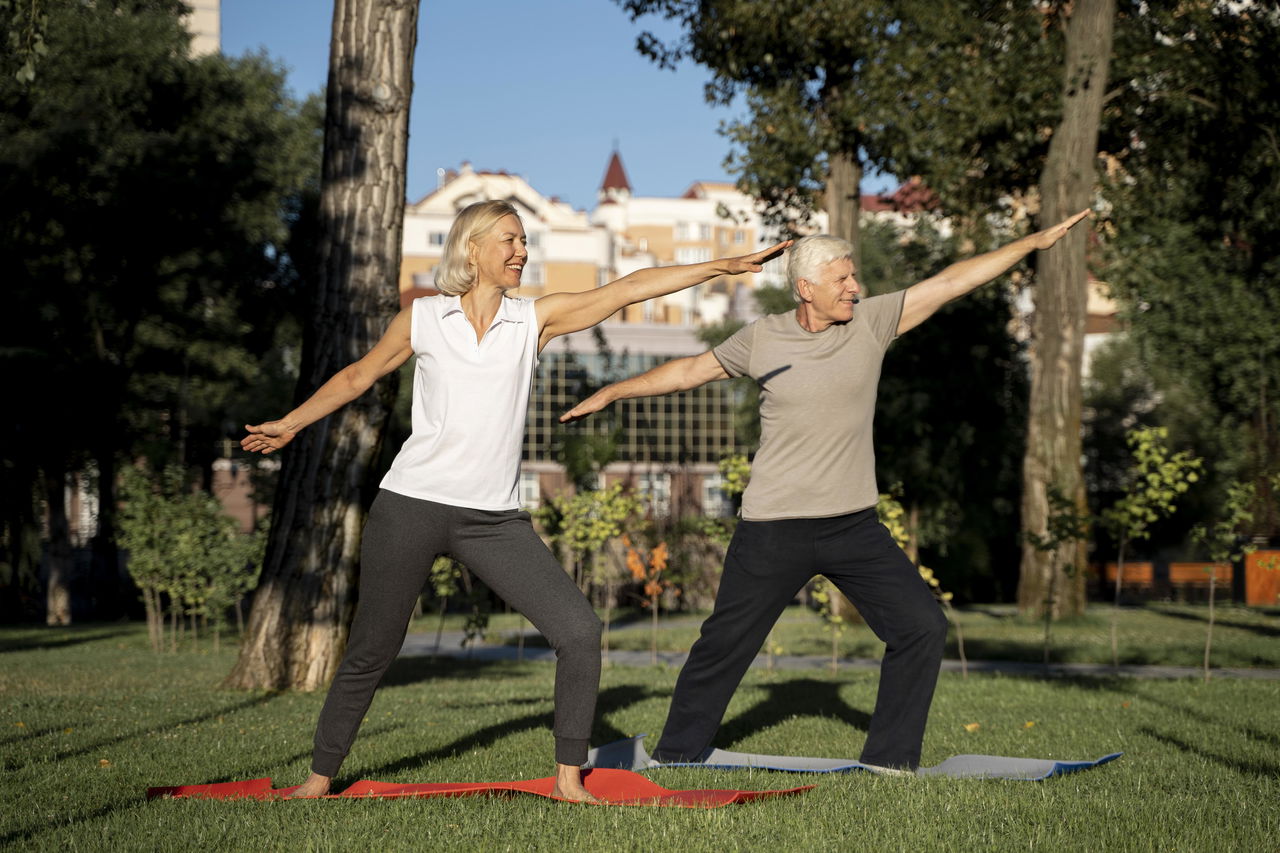Hibrid guide
Exercise and Aging: How to Keep Your Body Young
8 min. read


Written by
Alicia Madison
Published
Fri, 25 Oct 2024
Introduction
Aging is an inevitable part of life, but the way we age is largely influenced by lifestyle choices. Exercise is one of the most effective ways to keep the body young, healthy, and resilient as we grow older. By engaging in regular physical activity, we can maintain muscle strength, flexibility, cardiovascular health, and cognitive function. This article explores the types of exercise that best support healthy aging, the science behind exercise and longevity, and practical tips for incorporating fitness into daily life for long-term health.
The Science Behind Exercise and Longevity
Exercise influences nearly every aspect of our physical and mental health, helping prevent chronic diseases, boost immune function, and improve mental clarity. Here’s how exercise supports healthy aging at a cellular level:
1. Reduces Inflammation and Oxidative Stress
Chronic inflammation and oxidative stress are linked to age-related diseases such as arthritis, cardiovascular disease, and Alzheimer’s. Exercise reduces inflammation by lowering pro-inflammatory markers in the body, and it increases antioxidant defenses that combat oxidative stress. This supports healthier cells and tissues as we age.
2. Supports Telomere Health
Telomeres are protective caps on the ends of chromosomes that shorten with age. Shorter telomeres are associated with faster aging and higher disease risk. Research shows that regular exercise can help maintain telomere length, promoting cellular longevity.
3. Increases Growth Factors for Brain and Muscle Health
Exercise increases levels of brain-derived neurotrophic factor (BDNF) and other growth factors, which support brain cell growth, cognitive function, and neuroplasticity. For muscles, growth factors help repair tissue, build strength, and maintain physical function, making exercise essential for both cognitive and physical vitality.
4. Enhances Cardiovascular Health
Cardiovascular disease remains one of the leading causes of death worldwide. Exercise strengthens the heart, improves blood flow, and supports healthy blood pressure, reducing the risk of heart disease and stroke. A healthy cardiovascular system is essential for longevity and quality of life as we age.
Types of Exercise for Healthy Aging
To fully benefit from exercise, it’s important to include a variety of workouts that support strength, flexibility, balance, and cardiovascular health. Here are the key types of exercise that help keep the body young:
-
Aerobic Exercise (Cardio) : Aerobic exercise, such as walking, swimming, or cycling, improves cardiovascular health and lung capacity, making it easier for the body to deliver oxygen to tissues. Aim for at least 150 minutes of moderate-intensity aerobic exercise per week. This can be broken into 30-minute sessions, five times a week.
-
Strength Training : As we age, we naturally lose muscle mass and bone density, which increases the risk of falls and fractures. Strength training helps counteract this loss by building and maintaining muscle and bone strength. Resistance exercises like weightlifting, bodyweight exercises (push-ups, squats), or resistance band workouts are highly effective. Try to include strength training sessions at least twice a week.
-
Flexibility and Stretching : Flexibility declines with age, making stretching an important part of an anti-aging exercise routine. Stretching improves joint mobility, which can help prevent injuries and reduce pain from stiffness. Yoga or dedicated stretching exercises 2-3 times a week can improve flexibility and joint health.
-
Balance Exercises : Balance exercises are essential for preventing falls, a common risk in older adults. Activities like tai chi, yoga, and single-leg stands improve stability and coordination, which enhances confidence and reduces the risk of injury. Adding balance exercises to your weekly routine supports functional fitness as we age.
-
High-Intensity Interval Training (HIIT) : HIIT workouts, which involve alternating between short bursts of intense exercise and rest, are effective for cardiovascular health, muscle endurance, and metabolism. Studies suggest that HIIT can help reverse certain markers of aging at a cellular level. Start with 1-2 HIIT sessions per week if you’re comfortable with higher-intensity workouts.
Practical Tips for Building a Long-Term Exercise Routine
-
Set Realistic Goals : Setting small, achievable goals is essential for building a sustainable exercise routine. Whether it’s walking for 20 minutes a day or adding a strength session each week, start with what feels manageable and build from there.
-
Mix It Up to Avoid Plateaus : Our bodies adapt to routines over time, so it’s important to vary your exercises. Mix different types of workouts throughout the week to target various aspects of health, from strength to cardiovascular fitness. This prevents boredom and encourages balanced fitness.
-
Listen to Your Body : Exercise should challenge you but shouldn’t cause pain. Pay attention to how your body feels, and adjust intensity or frequency as needed. Older adults especially should prioritize form over intensity to avoid injury and ensure long-term progress.
-
Find Activities You Enjoy : Enjoyment is a key factor in maintaining an exercise routine. If you don’t enjoy running, consider other forms of cardio like dancing, swimming, or biking. When exercise feels enjoyable, you’re more likely to stick with it.
-
Incorporate Physical Activity Into Daily Life : Exercise doesn’t have to be limited to the gym. Look for ways to incorporate movement into your day, like taking the stairs, gardening, or going for a walk during lunch. Consistent physical activity adds up over time and supports health as effectively as structured workouts.
Exercise as a Tool for Cognitive Health and Mental Well-Being
Exercise isn’t just beneficial for physical health; it also has profound effects on the brain. Here’s how regular exercise supports cognitive function and emotional well-being:
-
Enhances Memory and Focus : Physical activity increases blood flow to the brain and promotes the growth of new neurons, especially in areas related to memory and learning. This can help preserve cognitive function and reduce the risk of conditions like Alzheimer’s.
-
Reduces Symptoms of Depression and Anxiety : Exercise boosts levels of endorphins and serotonin, which help improve mood and reduce feelings of stress. Studies show that regular physical activity can be as effective as antidepressants for mild to moderate depression.
-
Improves Sleep Quality : Good sleep is essential for longevity, and exercise can help improve both sleep duration and quality. Aerobic exercise, in particular, has been shown to reduce insomnia and increase time spent in deep sleep, which is crucial for cellular repair and recovery.
-
Increases Stress Resilience : Regular exercise helps regulate the body’s stress response, making it easier to cope with daily challenges. This mental resilience is essential for long-term health and longevity, as chronic stress can contribute to many age-related diseases.
Common Challenges and Solutions for Exercising in Older Age
Staying active can be challenging as we age, especially if joint pain, muscle stiffness, or fatigue are issues. Here are some common obstacles to exercising in older age and solutions to overcome them:
-
Joint Pain or Arthritis : Low-impact activities like swimming, cycling, or using an elliptical are gentler on joints and reduce pain. Consider exercises like water aerobics, which provide resistance without putting stress on the joints.
-
Muscle Stiffness : Regular stretching, yoga, or gentle mobility exercises can help alleviate stiffness. Warming up before exercise and cooling down afterward also support joint health and reduce soreness.
-
Lack of Energy : Fatigue is common, but even light activity like a short walk can boost energy levels. Start with low-intensity exercises, and gradually increase as your stamina improves.
-
Time Constraints : Exercise doesn’t have to take up a lot of time. Short, effective sessions like HIIT or circuit training can deliver significant benefits in as little as 20-30 minutes. You can also break up exercise into shorter intervals throughout the day.
Key Takeaways
Exercise is one of the most powerful tools for healthy aging, supporting physical, mental, and emotional well-being. By incorporating a mix of aerobic, strength, flexibility, and balance exercises into your routine, you can keep your body strong, reduce age-related health risks, and improve longevity. Even small changes can make a big difference, and the best exercise routine is one that you enjoy and can maintain over the long term.
In Conclusion
Regular physical activity is essential for promoting longevity and maintaining a high quality of life as we age. By focusing on a well-rounded exercise routine that includes strength, flexibility, and cardiovascular health, you can build a resilient body and mind that ages gracefully. Exercise is not only a tool for living longer but also for living well, with vitality and independence in each stage of life.

Alicia M.
@alicia_96
Exercise and Aging: How to Keep Your Body Young
